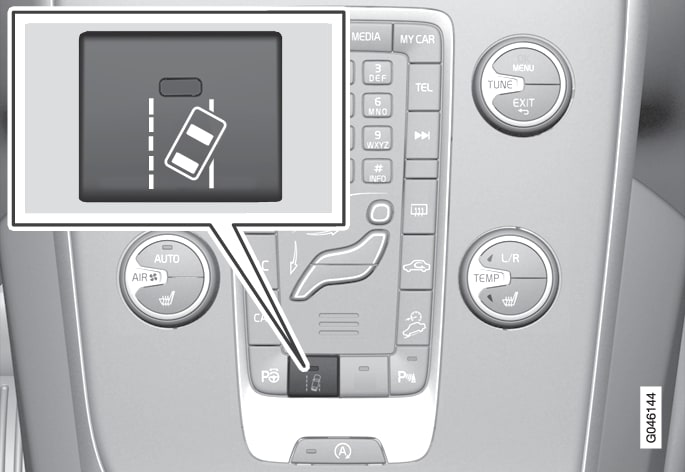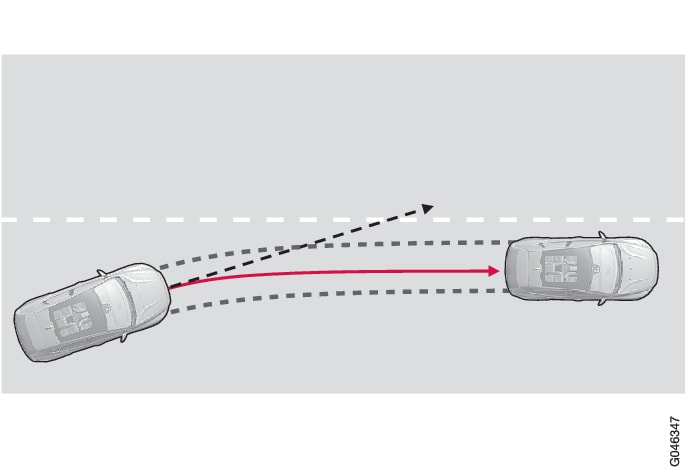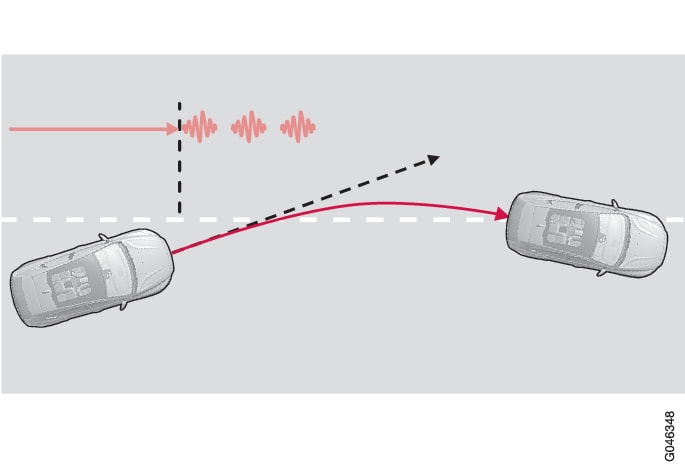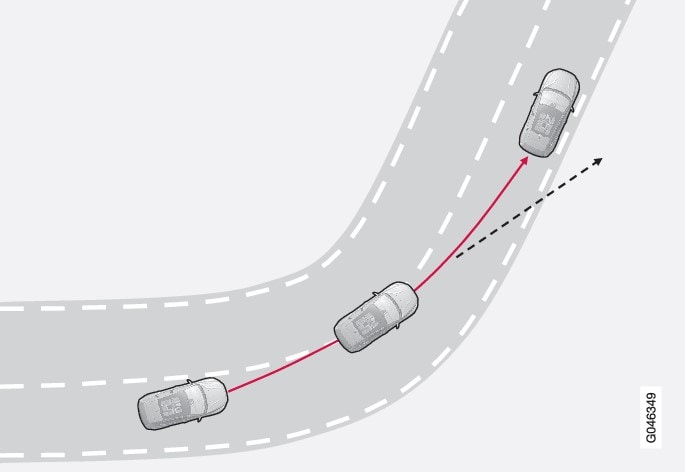Lane Keeping Aid - function
Lane Keeping Aid is one of the functions in the Driver Alert System - sometimes also referred to as LKA (Lane Keeping Aid).
The function is intended for use on motorways and similar major roads in order to reduce the risk of the vehicle accidentally leaving its own lane in certain situations.
Off & On
Lane Keeping Aid is active within the speed range 65-200 km/h on roads with clearly visible side lines. The function is temporarily deactivated on narrow roads with less than 2.6 metres between the lane side lines.

Press the button in the centre console to activate or deactivate the function. An illuminated lamp in the button shows when the function is switched on.
Some combinations of the selected equipment leave no vacant space for an On/Off button in the centre console - in which case the function is instead handled in the car's menu system MY CAR, MY CAR. There, proceed as follows:
- Search for Lane Keeping Aid and then select On or Off.
In addition, the following selections can be made in MY CAR:
- Warning with vibration in the steering wheel: Vibration only - On or Off.
- Active steering: Steering assist only - On or Off.
- Both Warning with vibration in the steering wheel and Active steering: Full function - On or Off.
Active steering
Lane Keeping Aid strives to keep the car within the side lines for the lane.

If the vehicle approaches the left or right side line of the lane and the direction indicator is not activated, the car is steered back into the lane.
Warning with vibration in the steering wheel

If the vehicle crosses a side line then Lane Keeping Aid alerts the driver with pulsating vibration in the steering wheel. This occurs regardless of whether the car is actively steered back by applying a slight steering torque.
Dynamic cornering

In certain cases, Lane Keeping Aid allows the car to cross side lines without engaging active steering or alerting with pulsating vibration in the steering wheel. Using an adjacent lane for dynamic cornering when there is a clear line of vision is an example of one such case.